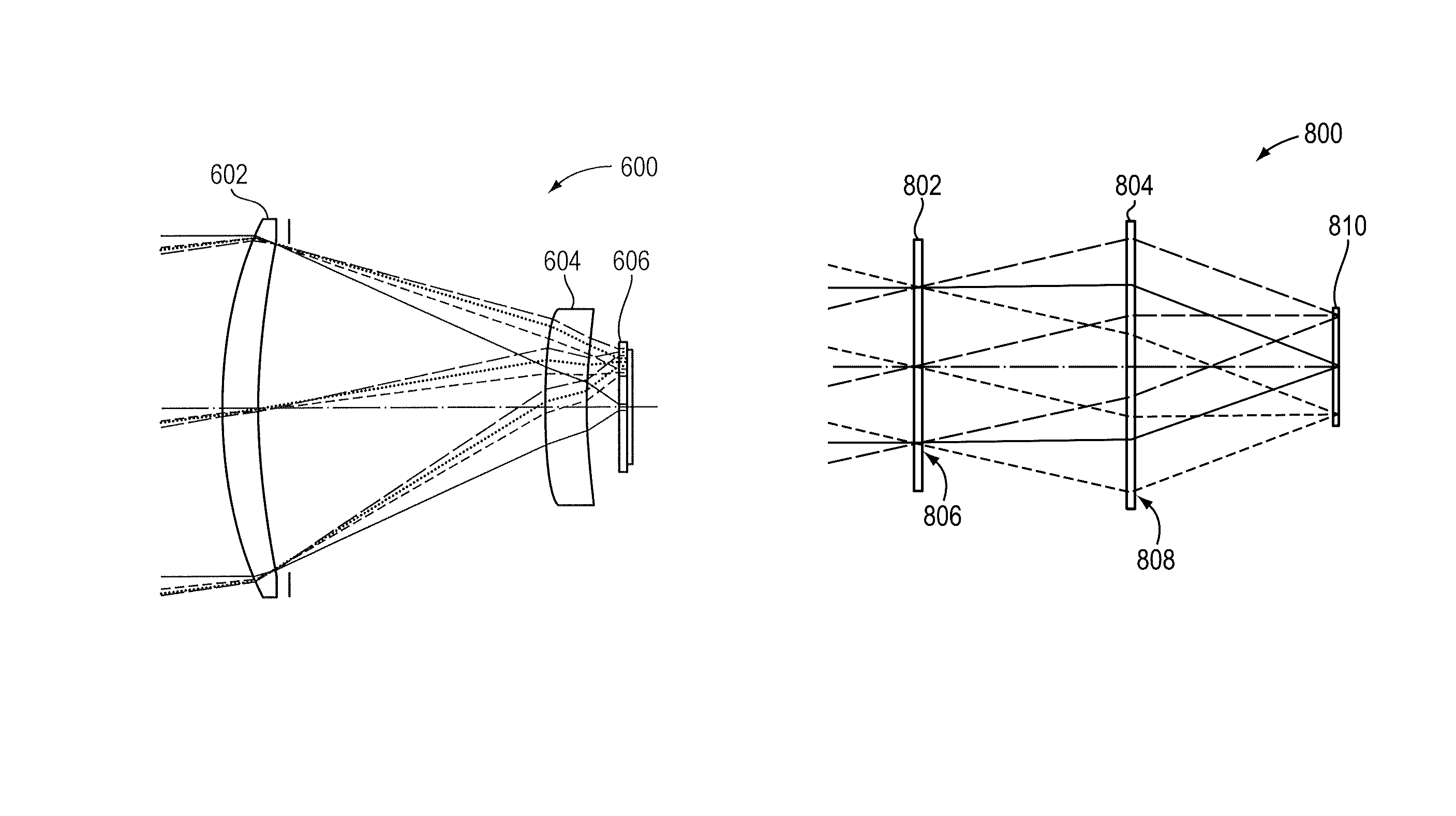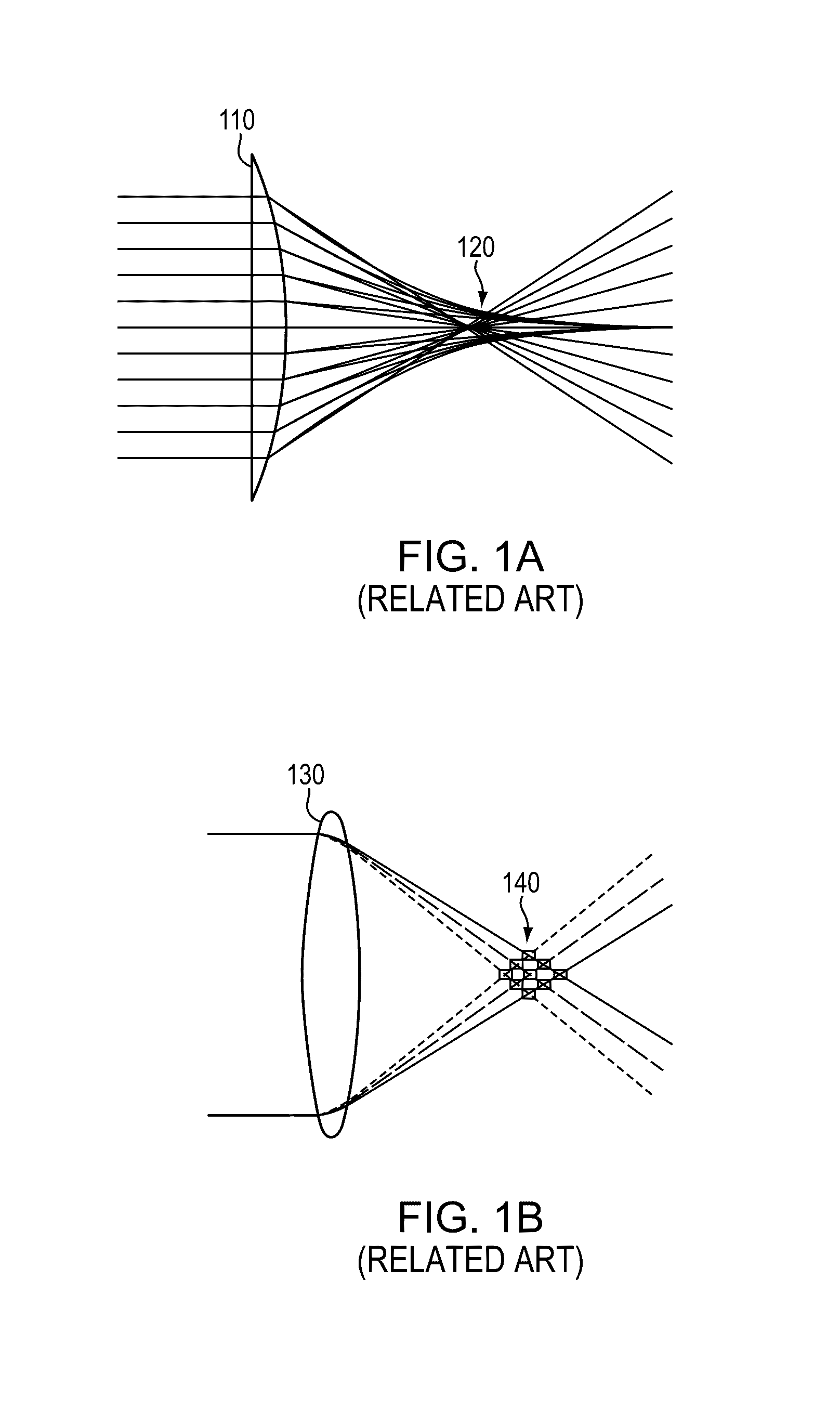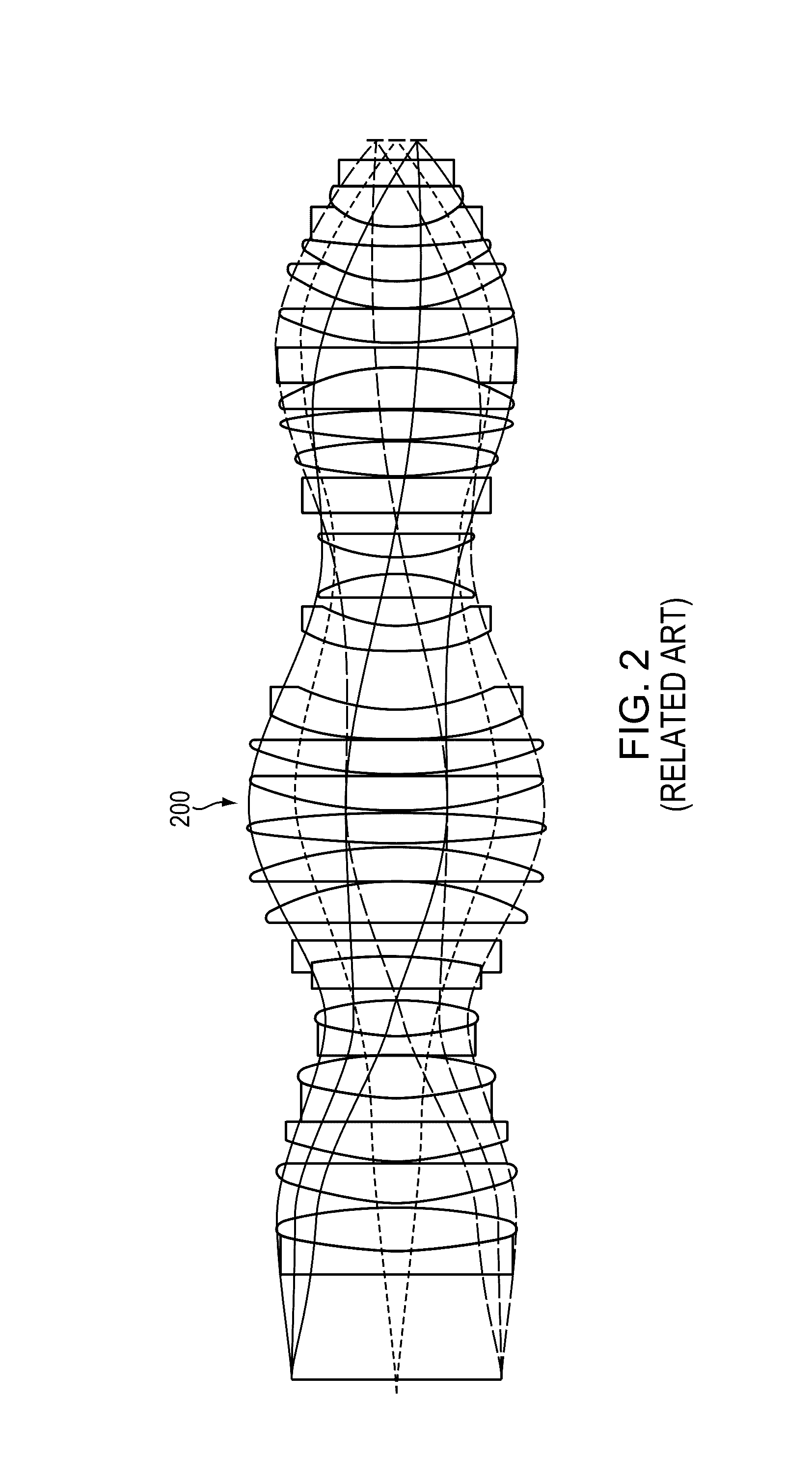Hybrid grin diffractive optics
a technology of diffractive optics and hybrid grin, applied in the field of hybrid grin diffractive optics, can solve the problems of affecting the final product, imposing additional size, weight, cost, manufacturing complexity, etc., and less able to correct for chromatic aberration, and imposing weight and weigh
- Summary
- Abstract
- Description
- Claims
- Application Information
AI Technical Summary
Benefits of technology
Problems solved by technology
Method used
Image
Examples
Embodiment Construction
[0033]Gradient index (GRIN) optical components are fashioned from bulk materials that have a smooth and controlled variation of refractive index over distance within the material. When tracing the path of an optical ray traveling through a GRIN material, the path of that optical ray is bent most strongly when the ray is perpendicular to an optical index gradient, and is not bent when traveling a path parallel to an index gradient. The refractive index profile of GRIN materials can be designed to vary in one, two or three separate dimensions. Three categories of GRIN materials of particular note include axial GRIN materials, spherical GRIN materials, and radial GRIN materials.
[0034]As depicted in FIG. 3A, axial GRIN materials 300 have variation of refractive index in only a single dimension, along the optical axis. As stated above, when the index variation 302 of an axial GRIN material is parallel to the light's direction of propagation, the axial GRIN material provides no refractive...
PUM
 Login to View More
Login to View More Abstract
Description
Claims
Application Information
 Login to View More
Login to View More - R&D
- Intellectual Property
- Life Sciences
- Materials
- Tech Scout
- Unparalleled Data Quality
- Higher Quality Content
- 60% Fewer Hallucinations
Browse by: Latest US Patents, China's latest patents, Technical Efficacy Thesaurus, Application Domain, Technology Topic, Popular Technical Reports.
© 2025 PatSnap. All rights reserved.Legal|Privacy policy|Modern Slavery Act Transparency Statement|Sitemap|About US| Contact US: help@patsnap.com



